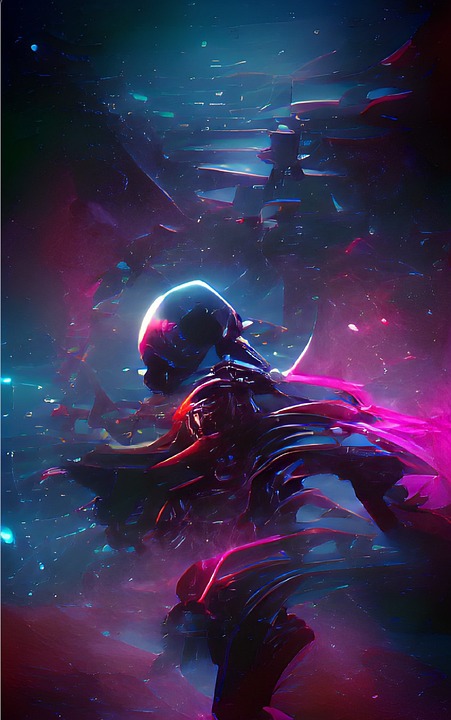Introduction
One of the most groundbreaking developments in the intersection of art and technology is the rise of non-fungible tokens (NFTs). These digital assets, built on blockchain technology, have revolutionized the art market, allowing artists to sell and authenticate their work in a decentralized and transparent manner. In this article, we will explore the rise of NFTs and delve into their impact on the digital art market.
What are NFTs?
NFTs, short for non-fungible tokens, are unique digital assets that represent ownership or proof of authenticity of a particular piece of art, music, collectible, or any other digital creation. Unlike cryptocurrencies such as Bitcoin or Ethereum, which are fungible and can be exchanged on a like-for-like basis, NFTs cannot be interchanged as each token holds distinct properties and characteristics.
The Technology Behind NFTs
NFTs are built on blockchain technology, leveraging the security and transparency that comes with it. Blockchain acts as a decentralized ledger, ensuring immutability and traceability of transactions. Artists mint their art as NFTs by tokenizing them through specific platforms, typically Ethereum-based. Once tokenized, each NFT contains metadata that provides relevant information about the artwork, including the artist, description, and ownership history.
The Advantages of NFTs
While traditional artwork has always faced challenges related to authentication and ownership, NFTs mitigate many of these issues. Let’s explore some of the advantages that NFTs bring to the digital art market.
Authentication and Provenance
NFTs provide a foolproof method for verifying the authenticity and provenance of digital artwork. Each token is unique and contains metadata that traces its origin and ownership history. This eliminates the risk of forgeries or unauthorized reproductions, giving artists control over their creations.
Direct Monetization for Artists
NFTs offer an unprecedented opportunity for artists to monetize their digital creations directly. In traditional art markets, artists often rely on galleries or intermediaries to sell their work, which can result in limited profits. With NFTs, artists can sell their work directly to collectors, cutting out the middlemen. Additionally, they can set royalty fees for future sales, ensuring ongoing income as their art appreciates in value.
New Revenue Streams and Tokenization of Assets
NFTs enable artists to explore new revenue streams and tokenize various aspects of their art. Beyond selling the initial artwork, artists can create limited editions, unlockable content, or even virtual experiences that complement their digital creations. This expands the possibilities for artists to engage with their audience and generate income beyond the primary artwork.
Market Growth and Recognition
The explosion of NFTs in the digital art market has been remarkable. In the past year alone, we have witnessed numerous high-profile sales and widespread recognition of the potential of NFTs.
NFT Art Sales and Record-Breaking Auctions
Artists and collectors have been able to leverage NFTs to achieve jaw-dropping sales figures. In March 2021, digital artist Beeple sold an NFT artwork for a staggering $69 million in a record-breaking auction. This sale not only brought attention to the potential value of digital art but also solidified NFTs as a legitimate means of buying and selling artwork.
Mainstream Adoption and Recognition
The rise of NFTs has captured the attention of not only art enthusiasts but also mainstream media. With high-profile artists, musicians, and celebrities joining the NFT frenzy, the technology has gained significant recognition and legitimacy. As more artists embrace NFTs, we are witnessing a transformation in how art is perceived, bought, and sold.
The Future of NFTs in the Art Market
As NFTs continue to disrupt the digital art market, it is essential to consider what the future may hold for this revolutionary technology.
Increased Accessibility and Democratization
NFTs have the potential to democratize the art market by eliminating barriers to entry for artists. With online platforms and marketplaces, artists from all backgrounds can showcase their work and find an audience. This increased accessibility benefits both creators and collectors, facilitating a more inclusive and diverse art ecosystem.
Integration of Physical and Digital Art
The integration of NFTs with physical art opens doors for exciting possibilities. By minting physical artwork as NFTs, artists can establish a digital twin that represents the ownership and authenticity of the original piece. This fusion of physical and digital art not only enhances the collectible aspect but also allows for enhanced interaction and experiences for collectors and viewers.
Transforming Intellectual Property Rights
NFTs introduce new methods for managing and enforcing intellectual property rights in the art world. Through smart contracts, artists can establish rules and conditions for the use and ownership of their digital creations. This empowers artists to claim royalties and protect their rights even when their art is resold in secondary markets, ensuring ongoing recognition and compensation.
Conclusion
NFTs have emerged as a game-changer in the digital art market, revolutionizing the way art is bought, sold, and appreciated. With their ability to authenticate, tokenize, and create new revenue streams, NFTs provide unprecedented opportunities for artists and collectors alike. As the technology and market continue to evolve, we can expect NFTs to shape the future of the art world, driving innovation and redefining traditional notions of ownership and value.

